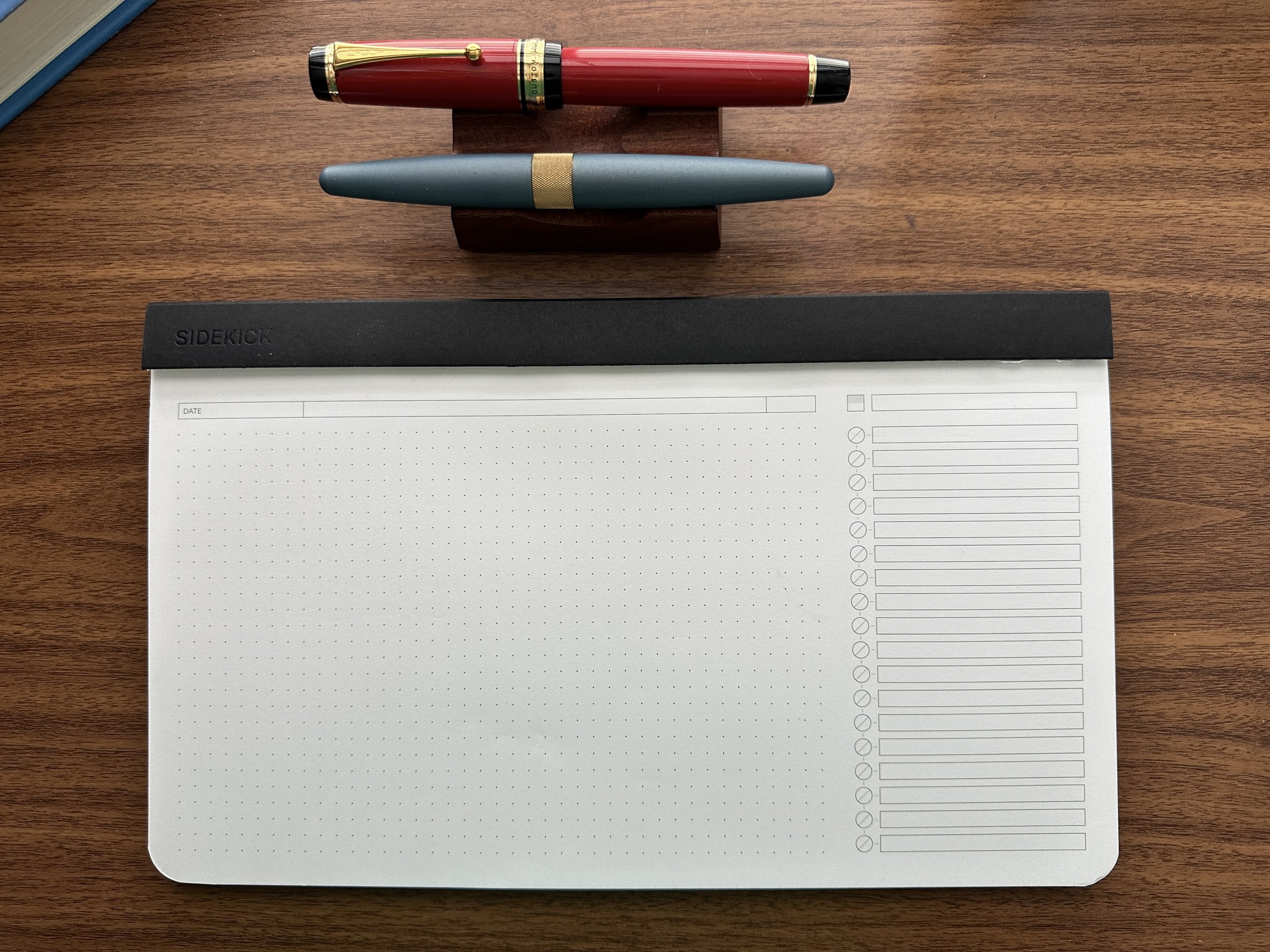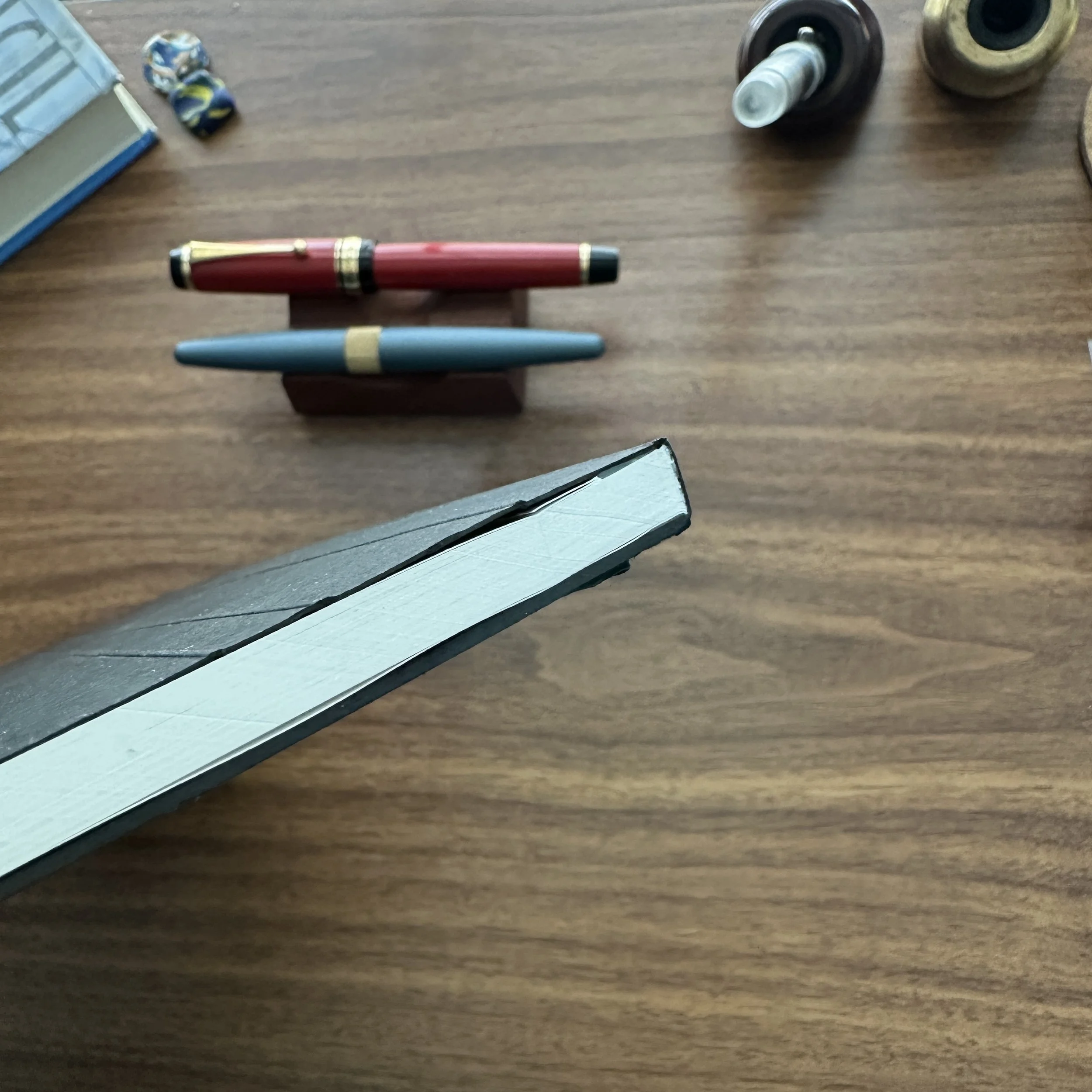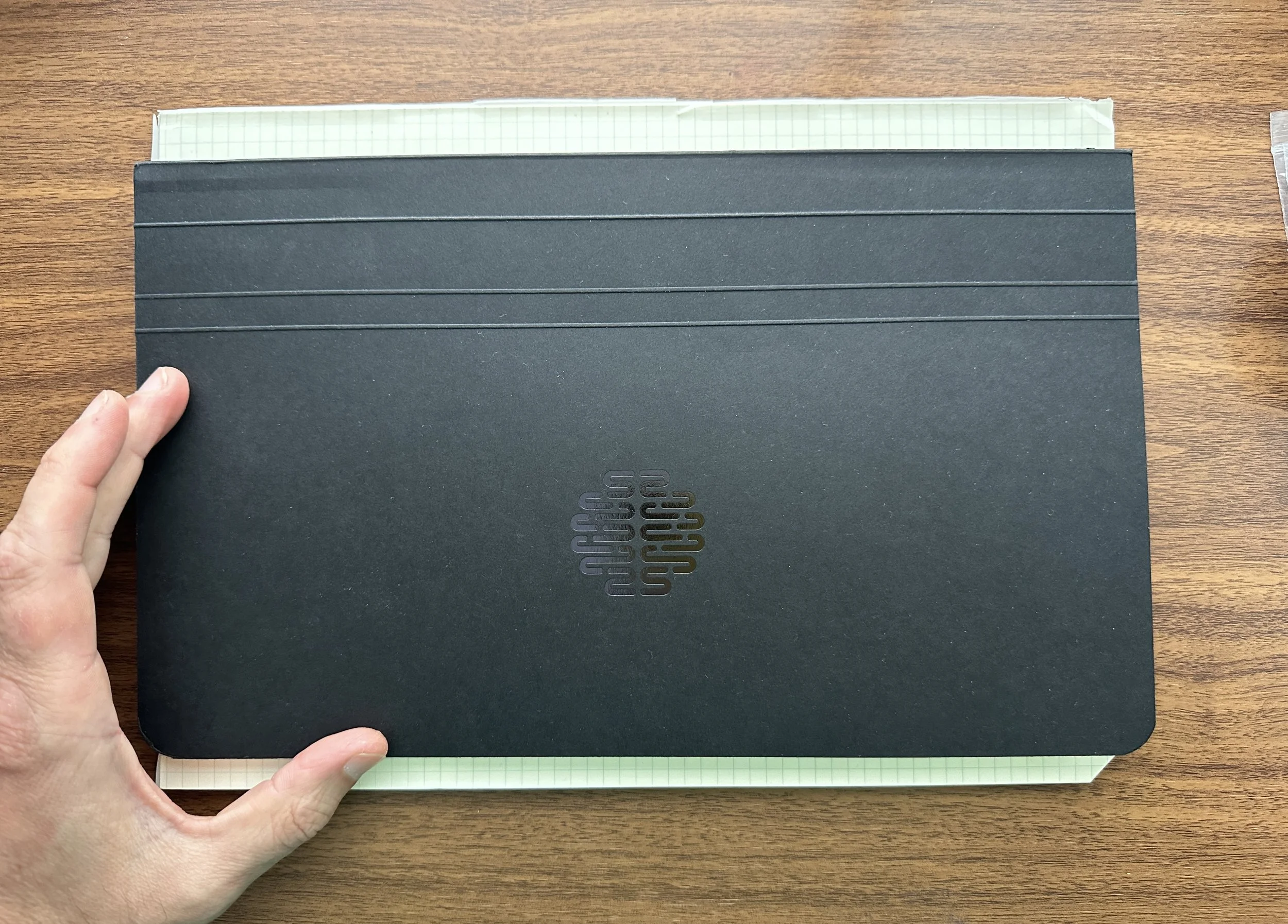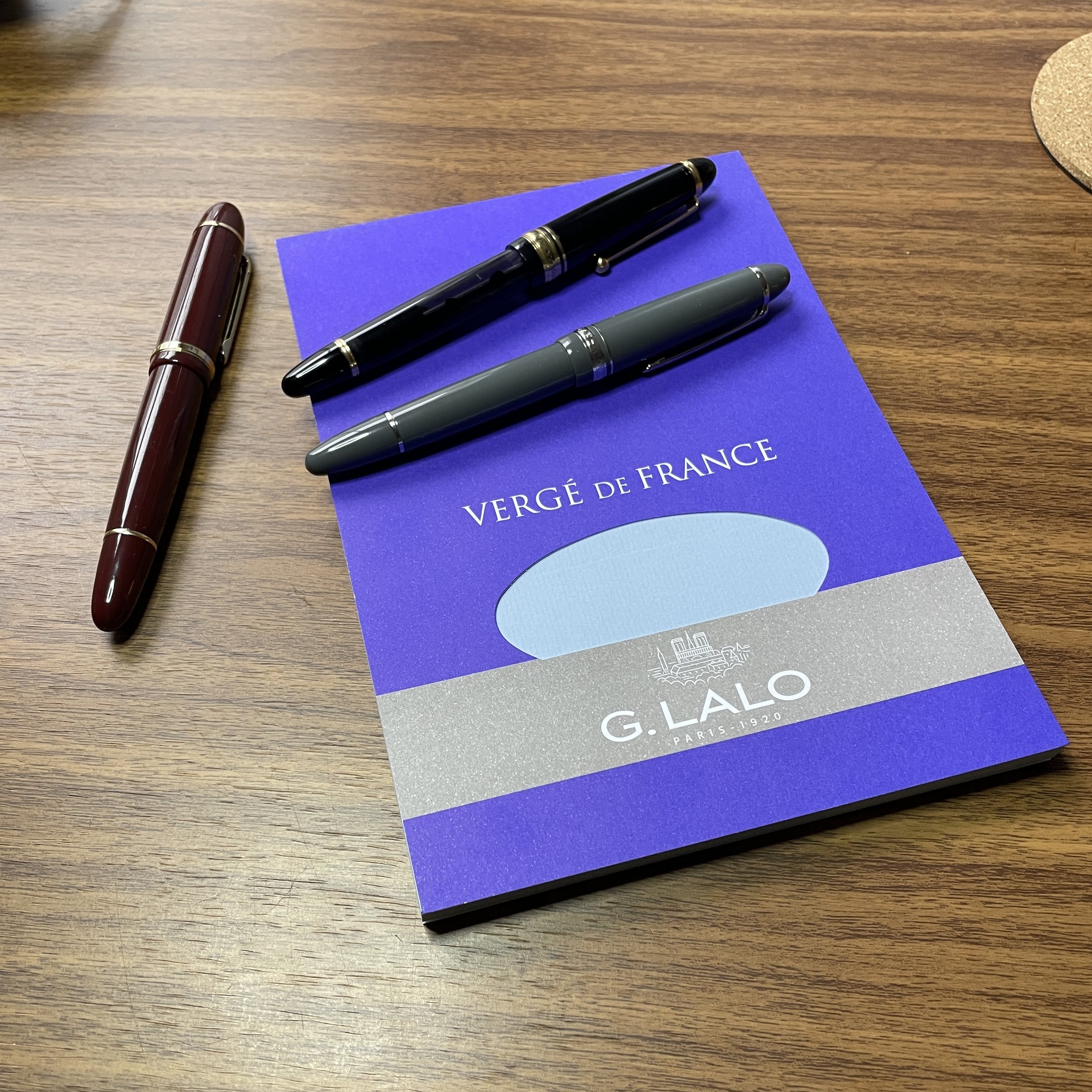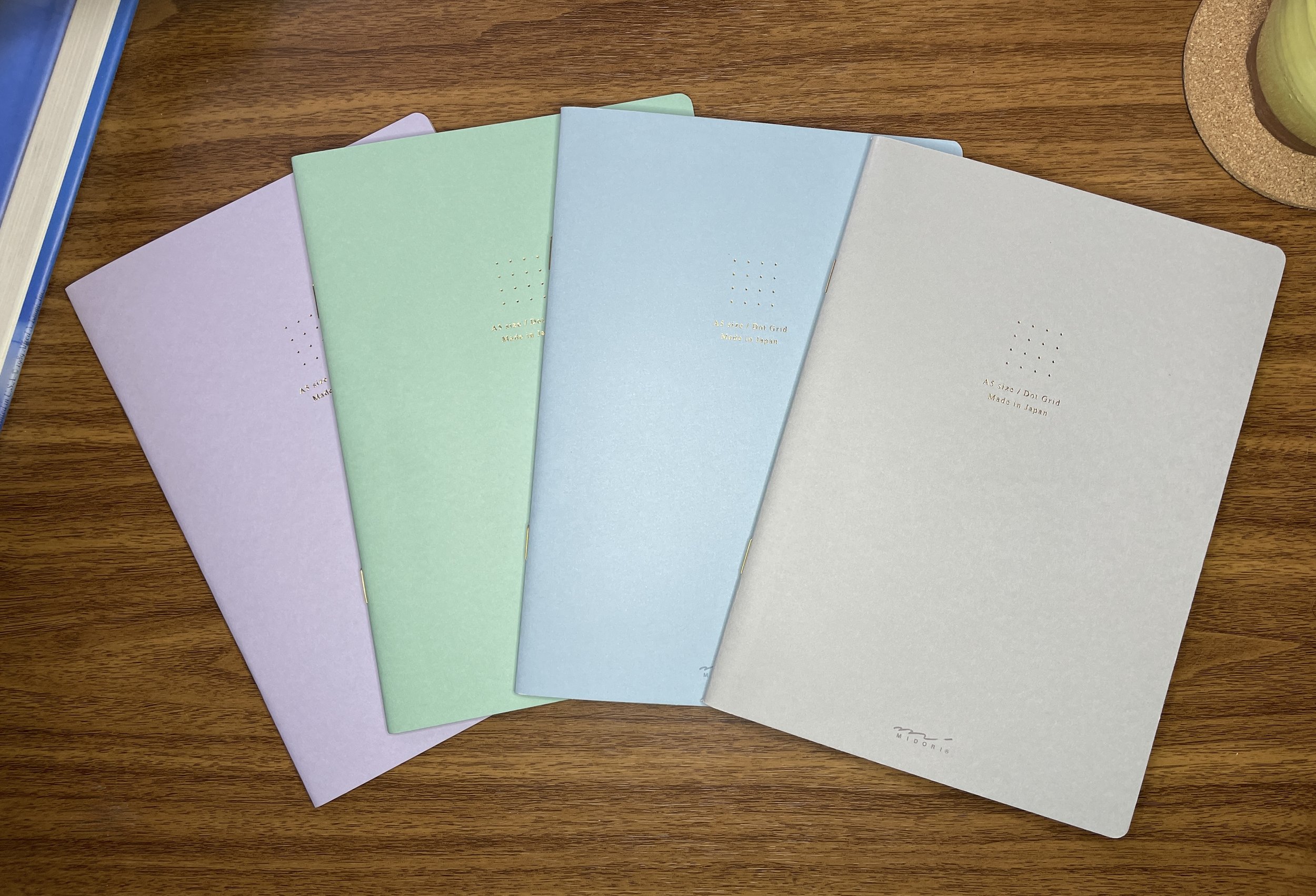Everyone has a personal benchmark, or reference point by which they measure most things, whether it’s pens, inks, paper, or something else entirely. For me, whenever I’m evaluating any sort of paper, my comparison starts with Clairefontaine.
In an era where new specialty paper brands hit the market on a seemingly weekly basis - each touted as having “special properties” or “even more ink friendliness than ___” - it’s easy to overlook the basics. Brands such as Clairefontaine and Rhodia (which come from the same family of companies but have slightly different paper formulations) have been churning out excellent all-around paper for a very long time, and if what you’re looking for is quality, relatively cost-effective paper that’s easy to find and capable of handling most pens and inks, I often suggest that new users start here. Specifically, the reasons I love/recommend this paper include:
Versatility. Clairefontaine Paper comes in a wide range of formats and rulings. Honestly, the idea for this post struck me yesterday morning as I was unpacking a recent shop order and found myself floored by the variety of products that kept emerging from the box. Clairefontaine makes pocket notebooks, reporter-style notebooks, A5 notebooks, A4 notebooks, legal pads, top-spiral legal pads, looseleaf paper - you get the picture. While I count myself a paper aficionado, and consider experimenting across product lines part of the fun, if you prefer to focus on the pens and/or inks you can stick to Clairefontaine and find pretty much any paper format you might need within that line.
Consistent Quality. What I love about Clairefontaine is that you don’t need to think about whether it’s going to offer you a baseline-level of fountain pen friendliness. Although most people lump them together as “Clairefontaine/Rhodia”, I’ve generally found Clairefontaine to be more consistent across batches and the product line as a whole.
Cost Effectiveness. Whether it’s those of us who use fountain pens on a daily basis at work, or prolific journalers who can fill a 100+ page notebook in a matter of weeks, most people have to pay attention to the cost of this hobby on some level. While they’ve had to raise prices over the past couple of years, Clairefontaine paper is still some of the more reasonably priced fountain pen friendly stationery on the market. As I write this, notebooks containing Clairefontaine paper range from $5.50 to $23, depending on size and page volume.
Clairefontaine paper is famous for how well it handles ink. The bright white version showcases color and shading fairly well. It also holds up to extremely wet pens and inks, though as discussed further below, that may affect dry time.
As you can see, there is zero bleed-through from handwriting. It took me FOUR passes with a q-tip - basically until the paper soaked through and began disintegrating, before I saw any bleeding whatsoever from the ink swab. Even then, it only bled along the “weak spots” in the paper (i.e., where the ruling was printed).
That’s not to say that Clairefontaine doesn’t have it’s drawbacks, and any well-rounded review should point them out. First of all, dry time can be an issue, especially with wet and/or super-saturated inks. What makes Clairefontaine paper so ink-friendly is the fact that the paper is coated to minimize feathering and bleed-through, so it takes longer to dry because the paper doesn’t absorb as much ink as other brands. As a result, many left handers find that that ink frequently smears, and certain Noodler’s and Organics Studio formulations will literally never dry on this paper. On a similar note, because this paper tends to feel very smooth, I find it less satisfying to use with pencil. While to me this is more of a tactile issue, some people claim that graphite smears more easily on Clairefontaine and other coated papers. YMMV.
Clairefontaine’s 1951 Collection, with it’s school-days-retro vibe, has been incredibly popular.
Takeaways and Where to Buy
I always keep Clairefontaine paper close at hand. I opened my “notebook stash drawer” in my office desk yesterday and three Clairefontaine products jumped out at me: (1) a packet of French-ruled looseleaf sheets, which will be returning to the shop soon; (2) a “Pupitre” legal-style A4 pad; and (3) a spiral-bound A4 French-ruled notebook. I started with Clairefontaine paper way back in college, when I first got into fountain pens, and at this point I consider myself a lifer with this brand.
In the interest of full disclosure (though most readers probably already know this) we do sell Clairefontaine directly via our own shop, though my love of this paper predates my status as a retailer by decades. You can generally find this paper at most pen retailers worldwide.
Further Reading
I’ve previously reviewed a few specific iterations of Clairefontaine Paper, including my favorite French/Seyes-ruled layout, which is what got me hooked on quality stationery all those years ago. For a broader look at how different brands compare, and what I consider to be “fountain pen friendly”, check out our “Hierarchies of Fountain Pen Friendly Paper” post. This particular article has a vibrant comments section, from which I’ve already picked up several new suggestions on additional brands to review and/or carry in the shop. Please add to the conversation if you don’t see one of your own favorites represented!
